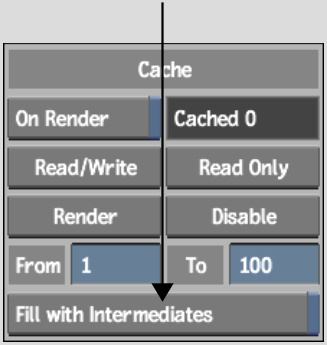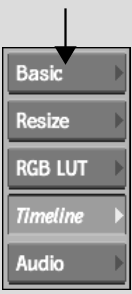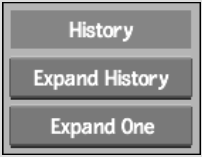Show in Contents

Add to Favorites

Home: Flint

Naming Nodes

Modifying Clip History in Batch

Managing Clips with Clip History

Expanding Clip History in Batch
You can load a clip with clip history into Batch
to display a process tree that recreates the clip from its original
sources, through all operations and effects, to its final output.
You can then modify the process tree at any point. Once you have
modified a clip, you can process it to create new clips, which,
in turn, also have their own history.
To
expand a clip's history in Batch:
- From the Main menu, click Processing.
- Click Batch, and then select a destination
reel.
- Click Setup, and then enable Fill with Intermediates.
Each node's cache is filled
with the intermediate clips contained in the history. Filling a
Batch history tree's cache increases interaction speed and avoids
the need to reprocess effects that were already rendered.
NoteIf an intermediate clip
corresponding to a step in the history is deleted, the cache for
that particular node is not filled.
- Drag
a Desk node to the Batch schematic.
The EditDesk appears.
- Select
the clip with clip history and click Exit Clip Select.
- Double-click
the clip in the Batch schematic.
- Click
Basic.
- Do
one of the following:
| Click: |
To expand: |
| Expand Hist |
The entire clip history into a Batch process tree. |
| Expand One |
The most recent step of the selected clip's history.
If the input clip to the last node also contains history (denoted
by “H” in the clip name), you can also expand
the history for that clip.
|
NoteUsing Expand One to display a clip's history
will not display any Action media. If you want to expand the history
of clips on any media, you have to convert the media into Batch
Action media, and then expand the history for that clip.
- Edit,
add, or remove nodes, or connect and disconnect nodes and clips
as you would in any Batch structure. See
Batch Processing.
- Add an
Output node to
the process tree, set the processing options, and then click Process
to render the Batch tree. See
Outputting and
Exporting Batch Results.
The new clip is added to the specified destination.
The original clip remains unchanged.








